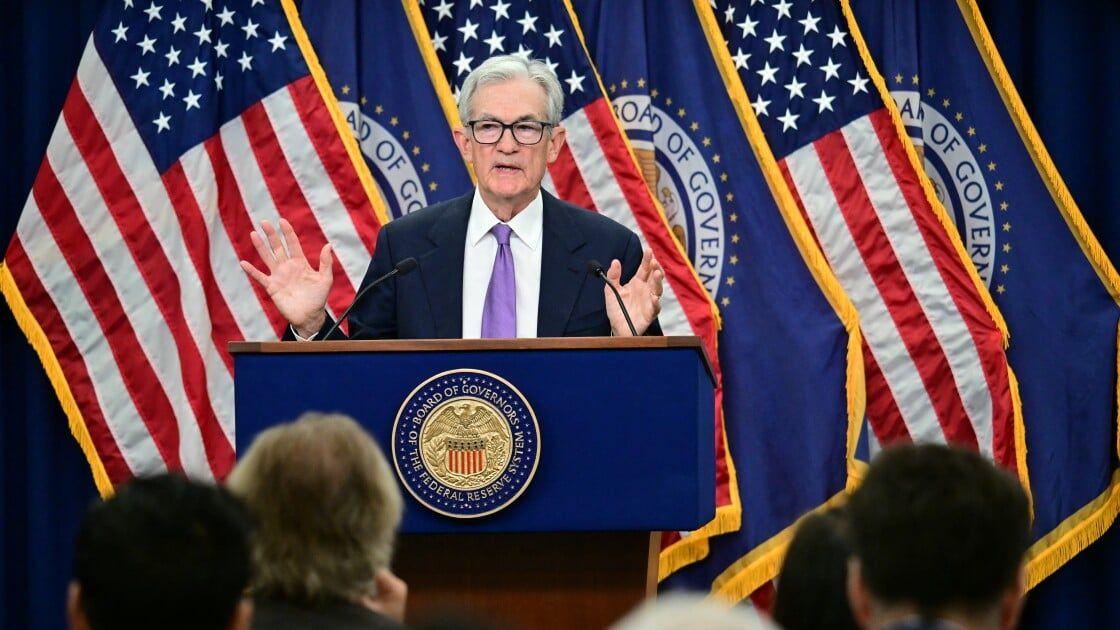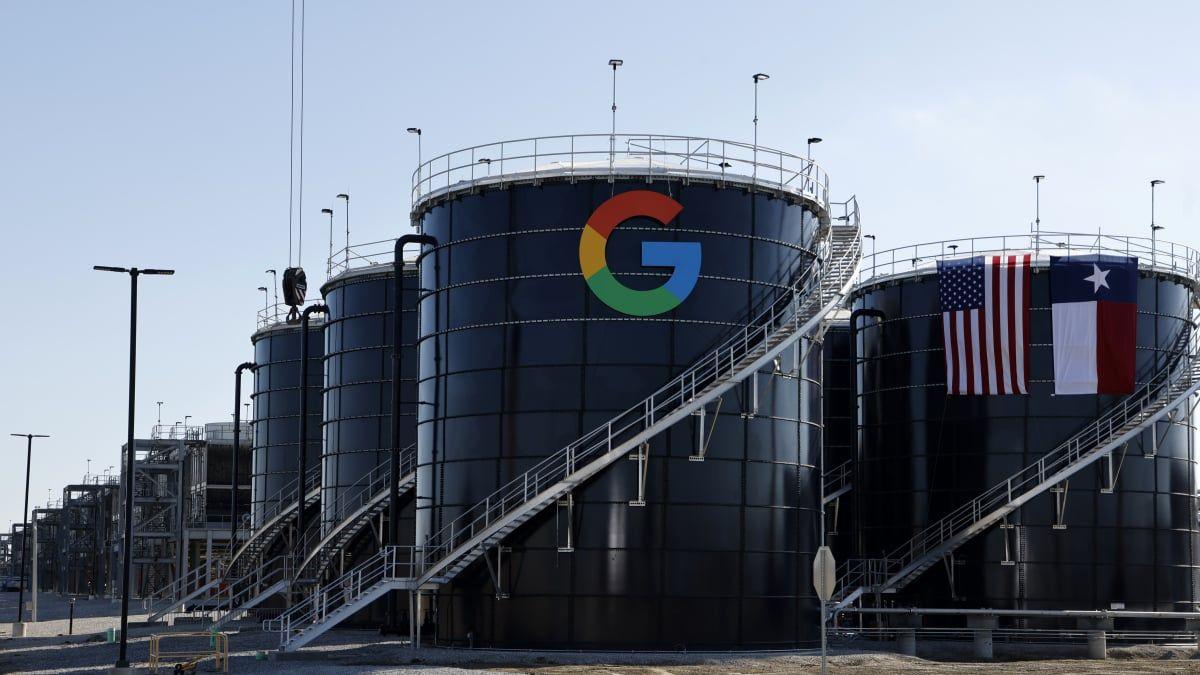Fed Rate Cuts: Not a Panacea for Sluggish US Job Market
2 Sources
2 Sources
[1]
Why Fed rate cuts are no magic fix for anemic hiring in US
Federal Reserve Chair Jerome Powell signaled a shift from inflation to employment, suggesting the Fed does not seek further cooling in the labour market. However, a slow hiring environment is expected to persist into next year. Factors impacting hiring include corporate cost management and sector-specific revenue pressures.Chair Jerome Powell cemented a shift in focus from inflation to employment last week when he said that the Federal Reserve does not seek a further cooling in the labor market. It was a welcome message for those concerned about an economic slowdown. But there are reasons to expect today's sluggish hiring environment to persist at least into early next year, frustrating job seekers and policymakers alike. We are in a "low hiring, low firing" labor market regime. The Job Openings and Labor Turnover Survey showed that June was the weakest month for hiring in a decade if you exclude the early phase of the pandemic. Many employers have avoided layoffs by managing costs via attrition and headcount freezes, anticipating a turnaround once the Fed starts cutting interest rates (as I noted here). At the same time, the unemployment rate has climbed as immigration and greater participation among native-born American workers swelled the labor force. Powell's speech at the Jackson Hole conference makes it less likely that we'll see layoffs pick up, but, consistent with prior policy easing cycles, the "low hiring" part of the current regime may well persist too, posing a conundrum for Fed officials as they seek to stabilize the labor market. Across corporate America, a disinflationary impulse is putting pressure on revenue growth, making it difficult to hire workers while maintaining profit margins. This is especially true for the discretionary goods sector where sell side analysts have been cutting their estimates of revenue growth for coming quarters, according to Bloomberg Intelligence. The Consumer Price Index shows that in core goods -- categories including home furnishings, clothing and automobiles -- prices on a year-over-year basis are falling faster than they have in 20 years. That's good news for consumers, but bad news for sellers of those products. For the housing industry, the Fed's rate cuts will come too late, as I wrote earlier this month. A weaker-than-expected peak selling season this spring meant companies tied to housing have pushed out expectations for a recovery until next year. They're unlikely to increase hiring until there's more evidence that buyers are responding to lower mortgage rates. The technology sector seems to be going through something akin to a jobless recovery despite the boom in investments related to artificial intelligence. Google parent Alphabet Inc.'s headcount has fallen slightly over the past year while capital expenditures surged 85%. Meta Platforms Inc., another big AI spender, has resumed net hiring over the past few quarters but at a much slower pace than in the 2010s. AI requires heavy spending on chips, servers and data centers but, for the moment, doesn't seem to need many people. The experience of 2002 also shows that even a meaningful pickup in economic activity and interest rate-sensitive industries next year won't guarantee an increase in hiring. Back then, the economy had exited recession, consumption growth was solid, residential property investment contributed 0.3% to real gross domestic product growth, and homebuilder confidence increased, but the overall hiring rate was flat. It took until the latter half of 2003 -- almost two years after the end of the 2001 recession -- for hiring to increase and for the unemployment rate to begin to decline. The tension in the labor market right now is that overall momentum is negative -- as seen in declining job openings and the hires rate and rising unemployment -- even though some measures such as jobless claims and layoffs continue to be low and stable. The Fed has enough room to cut interest rates and should be able to reverse that negative momentum eventually. Yet the prospects for a pickup in hiring over the next couple of quarters appear dim. Richmond Fed President Thomas Barkin speculated on Bloomberg's Odd Lots podcast recently that the current dynamic of low hiring and low firing is unsustainable. Until this stalemate is resolved with companies willing to increase headcount, the labor market isn't out of the woods.
[2]
Why Fed rate cuts are no magic fix for anemic hiring in US
Federal Reserve Chair Jerome Powell signaled a shift from inflation to employment, suggesting the Fed does not seek further cooling in the labour market. However, a slow hiring environment is expected to persist into next year. Factors impacting hiring include corporate cost management and sector-specific revenue pressures. Chair Jerome Powell cemented a shift in focus from inflation to employment last week when he said that the Federal Reserve does not seek a further cooling in the labor market. It was a welcome message for those concerned about an economic slowdown. But there are reasons to expect today's sluggish hiring environment to persist at least into early next year, frustrating job seekers and policymakers alike. We are in a "low hiring, low firing" labor market regime. The Job Openings and Labor Turnover Survey showed that June was the weakest month for hiring in a decade if you exclude the early phase of the pandemic. Many employers have avoided layoffs by managing costs via attrition and headcount freezes, anticipating a turnaround once the Fed starts cutting interest rates (as I noted here). At the same time, the unemployment rate has climbed as immigration and greater participation among native-born American workers swelled the labor force. Powell's speech at the Jackson Hole conference makes it less likely that we'll see layoffs pick up, but, consistent with prior policy easing cycles, the "low hiring" part of the current regime may well persist too, posing a conundrum for Fed officials as they seek to stabilize the labor market. Across corporate America, a disinflationary impulse is putting pressure on revenue growth, making it difficult to hire workers while maintaining profit margins. This is especially true for the discretionary goods sector where sell side analysts have been cutting their estimates of revenue growth for coming quarters, according to Bloomberg Intelligence. The Consumer Price Index shows that in core goods -- categories including home furnishings, clothing and automobiles -- prices on a year-over-year basis are falling faster than they have in 20 years. That's good news for consumers, but bad news for sellers of those products. For the housing industry, the Fed's rate cuts will come too late, as I wrote earlier this month. A weaker-than-expected peak selling season this spring meant companies tied to housing have pushed out expectations for a recovery until next year. They're unlikely to increase hiring until there's more evidence that buyers are responding to lower mortgage rates. The technology sector seems to be going through something akin to a jobless recovery despite the boom in investments related to artificial intelligence. Google parent Alphabet Inc.'s headcount has fallen slightly over the past year while capital expenditures surged 85%. Meta Platforms Inc., another big AI spender, has resumed net hiring over the past few quarters but at a much slower pace than in the 2010s. AI requires heavy spending on chips, servers and data centers but, for the moment, doesn't seem to need many people. The experience of 2002 also shows that even a meaningful pickup in economic activity and interest rate-sensitive industries next year won't guarantee an increase in hiring. Back then, the economy had exited recession, consumption growth was solid, residential property investment contributed 0.3% to real gross domestic product growth, and homebuilder confidence increased, but the overall hiring rate was flat. It took until the latter half of 2003 -- almost two years after the end of the 2001 recession -- for hiring to increase and for the unemployment rate to begin to decline. The tension in the labor market right now is that overall momentum is negative -- as seen in declining job openings and the hires rate and rising unemployment -- even though some measures such as jobless claims and layoffs continue to be low and stable. The Fed has enough room to cut interest rates and should be able to reverse that negative momentum eventually. Yet the prospects for a pickup in hiring over the next couple of quarters appear dim. Richmond Fed President Thomas Barkin speculated on Bloomberg's Odd Lots podcast recently that the current dynamic of low hiring and low firing is unsustainable. Until this stalemate is resolved with companies willing to increase headcount, the labor market isn't out of the woods.
Share
Share
Copy Link
Despite expectations of Federal Reserve rate cuts in 2024, experts warn that lower interest rates may not be enough to stimulate hiring in the US job market. The complex relationship between monetary policy and employment is explored.

The Federal Reserve's Dilemma
As the US economy navigates through uncertain waters, the Federal Reserve finds itself at a crossroads. With expectations of interest rate cuts in 2024, many are hopeful that this monetary policy shift will reinvigorate the job market. However, economists and labor market experts caution that the relationship between interest rates and employment is far from straightforward
1
.The Complex Web of Employment Factors
The job market is influenced by a myriad of factors beyond just interest rates. These include technological advancements, global competition, and structural changes in various industries. Lower interest rates, while potentially stimulating economic activity, may not directly translate to increased hiring across all sectors
2
.Historical Precedents and Current Challenges
Looking back at previous economic cycles, the impact of rate cuts on employment has been mixed. While lower borrowing costs can encourage business expansion and consumer spending, they don't guarantee job creation. The current economic landscape, shaped by the aftermath of the COVID-19 pandemic and ongoing geopolitical tensions, presents unique challenges that may not respond uniformly to traditional monetary policy tools
1
.Sector-Specific Impacts
Different industries react differently to changes in interest rates. While sectors like construction and real estate might see more immediate benefits from lower rates, others, such as technology or healthcare, may be less directly affected. This disparity highlights the need for a nuanced understanding of how monetary policy impacts various segments of the economy
2
.Related Stories
The Role of Fiscal Policy and Structural Reforms
Experts argue that to truly address the challenges in the job market, a combination of monetary policy, fiscal measures, and structural reforms may be necessary. This could include targeted government spending, workforce development programs, and policies aimed at addressing long-term economic trends like automation and globalization
1
.Looking Ahead: A Balanced Approach
As the Federal Reserve contemplates its next moves, policymakers and business leaders are urged to consider a holistic approach to job market stimulation. While rate cuts may play a role in economic recovery, they should be viewed as part of a broader strategy rather than a silver bullet for employment woes. The coming months will be crucial in determining how the interplay between monetary policy and labor market dynamics unfolds in the post-pandemic era
2
.References
Summarized by
Navi
Related Stories
Recent Highlights
1
Google launches Gemini 3 Flash as default AI model, delivering speed with Pro-grade reasoning
Technology

2
OpenAI launches GPT Image 1.5 as AI image generator war with Google intensifies
Technology

3
OpenAI launches ChatGPT app store, opening doors for third-party developers to build AI-powered apps
Technology








